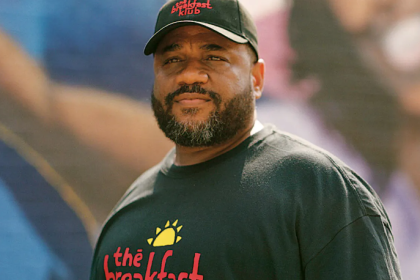The introduction of GLP-1 receptor agonists has reshaped the landscape of weight management and diabetes care. Drugs like Ozempic, Wegovy, and Mounjaro have demonstrated remarkable efficacy, not only in lowering blood sugar but also in facilitating substantial weight loss. Clinical trials show that patients using these medications can lose up to 15% of their body weight, a statistic that has positioned them as game-changers in obesity treatment.
However, this medical breakthrough comes with a steep price. With costs exceeding $1,000 per month, many Americans find themselves unable to afford these drugs, despite their life-changing potential. The stark reality of this pricing structure raises questions about healthcare accessibility, insurance limitations, and the potential alternatives for those who cannot pay out of pocket.
Who can access these medications?
A staggering one in eight American adults is now using a GLP-1 medication, highlighting both the demand and the urgency of making them more accessible. According to recent estimates, over 137 million Americans could benefit from these treatments, but without comprehensive insurance coverage, they remain out of reach for most.
While private insurance providers cover GLP-1 drugs for diabetes management, they are often reluctant to approve them for weight loss alone. The Biden administration has proposed expanding access through Medicare and Medicaid, but these efforts face significant hurdles. Many patients who need these medications to manage obesity-related health risks still find themselves navigating an insurance maze filled with denials, prior authorizations, and unexpected costs.
Finding cost-effective solutions
The financial burden of GLP-1 medications has led patients and healthcare providers to seek alternatives. Some of the most viable options include:
Manufacturer assistance programs
Several pharmaceutical companies offer savings programs to offset costs. Novo Nordisk, the manufacturer of Wegovy, provides discount coupons that can reduce monthly costs to $650. Eli Lilly, the maker of Zepbound, offers a direct payment program that allows some patients to purchase the drug for $399 per month. While these discounts provide some relief, they are still too expensive for many.
The potential for generic versions
As of now, there are limited generic alternatives for GLP-1 medications. Teva Pharmaceuticals has introduced an authorized generic version of Victoza, primarily used for diabetes treatment, which offers a slightly more affordable option. However, broader generic availability remains years away, keeping costs high for patients who need these medications for weight loss.
The risks of compounded medications
For those unable to afford brand-name versions, some turn to compounded GLP-1 medications—custom-made versions mixed by specialty pharmacies. While these compounds are often cheaper, they come with significant risks.
Lack of FDA approval
Unlike their brand-name counterparts, compounded GLP-1 medications are not FDA-approved. This means their safety, efficacy, and ingredient consistency cannot be guaranteed.
Variable safety and quality
Without strict regulatory oversight, the potency and purity of compounded versions can vary. Some patients report receiving ineffective or improperly dosed formulations, leading to unpredictable results.
Uncertain long-term effects
Since compounded medications do not undergo the same rigorous testing as FDA-approved drugs, their long-term effects remain unclear. Patients considering this option should consult a healthcare provider before making a decision.
The role of healthcare providers
Patients struggling with the affordability of GLP-1 medications should work closely with their doctors to explore the best options. Healthcare providers can help determine whether a patient qualifies for insurance coverage, assist in finding financial assistance programs, and suggest alternative treatments when necessary.
Medical supervision is essential
When taking any medication, but especially one as powerful as a GLP-1 receptor agonist, ongoing medical supervision is critical. Doctors can monitor effectiveness, adjust dosages, and identify potential side effects before they become serious complications.
What’s next for GLP-1 accessibility?
The skyrocketing demand for GLP-1 medications highlights a much larger issue within the American healthcare system—the widening gap between medical advancements and patient accessibility. While these drugs represent a major leap forward in treating obesity and diabetes, their high costs prevent millions from benefiting.
Patients, advocacy groups, and healthcare professionals continue to push for lower prices, expanded insurance coverage, and increased availability of generic alternatives. Until these changes occur, those seeking GLP-1 treatment must navigate a challenging landscape of high costs, limited options, and difficult decisions.















